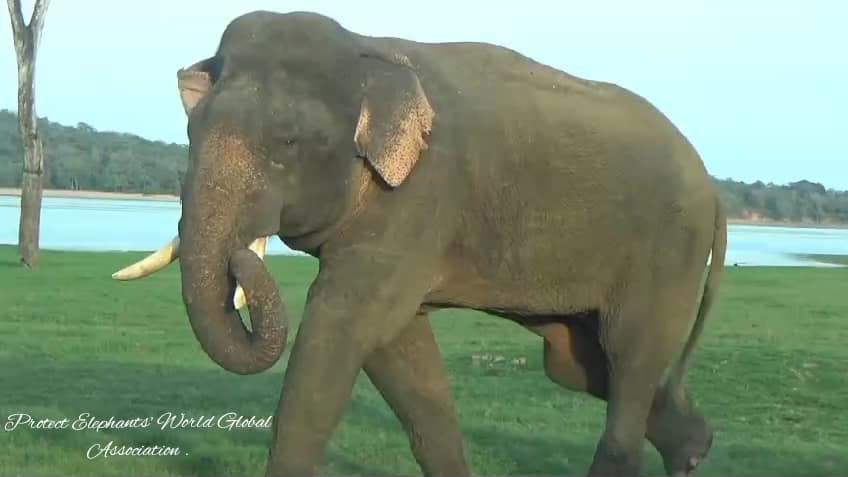The Esala Perahera in Kandy is historically significant because of the elephant Raja. This young elephant, captured by a professional elephant catcher named Umeru Lebbe from Batticaloa in 1925, was purchased by Tikiri Bandara Disawe of Giragama Mampitiya Walawwa and named Raja.
Due to the old age of Disawe of Mampitiya, Raja and another elephant named Kanda were donated to the Temple of the Tooth through a deed of donation. This occurred in 1937. It is said that Raja was about 22 years old at that time. Since then, Raja has had the opportunity to participate in the Esala Perahera, and after the demise of the Idampitiya elephant, Raja was given the honor of carrying the sacred tooth relic.
Raja, an elephant from a high noble lineage of ceremonial elephants, had a slightly higher left tusk compared to the right, a sign considered auspicious. There are many fascinating stories related to Raja, who is intertwined with the history of the Esala Perahera.
In 1955, during the Randoli Perahera of the Esala Perahera, while carrying the sacred relic casket and proceeding majestically, Raja suddenly stopped near the Queens Hotel. Despite the efforts of the mahouts to move him forward, showcasing their skills, Raja did not budge.
The then Diyawadana Nilame, C.B. Nugawela, who arrived from behind, instructed the mahouts to check the Ransivi Geya (golden canopy) on the elephant. It was discovered that a strap of the Ransivi Geya had broken. Raja had stopped to prevent the Ransivi Geya and the relic casket from falling to the ground.
The 1959 Upcountry Esala Perahera was an event that garnered much news, mainly due to the commotion caused by the elephants. Spectators and visitors, fearing for their lives, ran in all directions. Many elephants panicked, causing a great uproar in the streets.
While carrying the sacred casket, Raja stood majestically and calmly. The mahouts tied Raja to a tree on the street, and Raja performed his duty by safeguarding the sacred casket.
Once, a rebellious Raja bathed at the Katugastota bathing place, ignoring the commands of the mahouts and staying in the water from morning until night. By evening, Raja entered the path leading back to his elephant enclosure. A police vehicle had to go ahead of Raja to inform the local people through a loudspeaker to clear the path.
During this time, a disabled person, unable to move off the road, lay down in front of the approaching elephant, pleading not to be harmed. Although Raja approached with his majestic presence, he gently lifted the innocent person and placed him safely on a nearby mound before continuing on his way.
Having carried the sacred casket for a long time, Raja fell ill by 1986. The government provided full support for the treatment of the king elephant, and on August 26, 1986, President J.R. Jayewardene declared Raja a national treasure.
Raja was the first elephant in Asia and the second in the world to receive such an honor. The first elephant in the world to be so honored was ‘Ahmed’ from Kenya.
On January 1, 1987, Raja was injured when a car driven by a drunken military officer hit him on the road. The mahout died at the scene, and this incident gradually rendered Raja’s leg immobile. Raja’s health deteriorated from then on, and on July 16, 1988, Raja took his last breath.
In tribute to the deceased elephant, the government fully supported the reconstruction of Raja by specialists. As a museum exhibit, Raja’s lifelike replica was placed in a special building at the Temple of the Tooth and opened for public display from 1989 under the leadership of President R. Premadasa.















